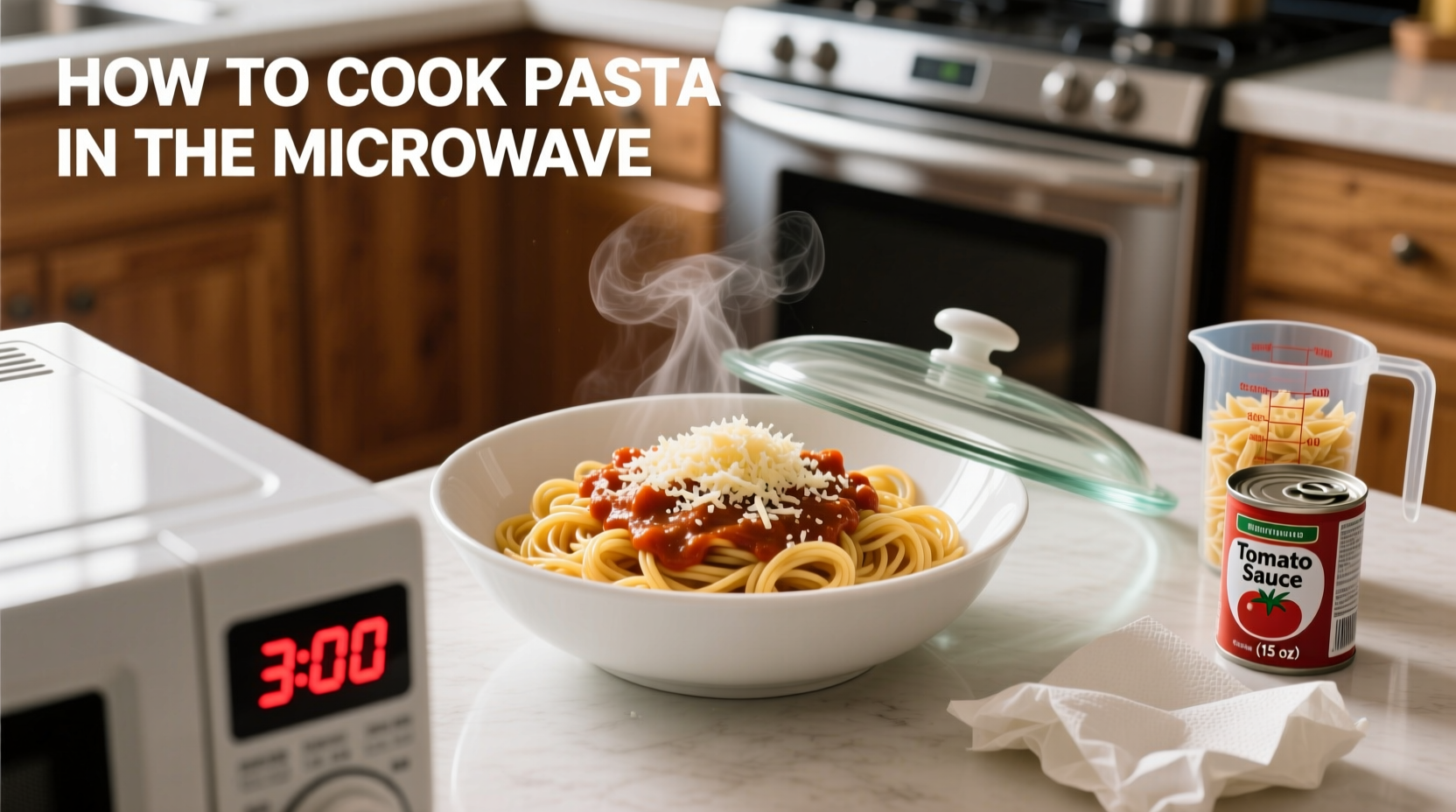Yes, you can cook perfect pasta in your microwave in just 10-12 minutes with minimal cleanup. The key is using the right water-to-pasta ratio (1:1.5), microwaving in short intervals with stirring, and letting it rest covered. This method works for most dried pasta shapes including spaghetti, penne, and fusilli, making it ideal for dorm rooms, offices, or quick single servings.
Why Microwave Pasta Beats the Stovetop for Quick Meals
When you're short on time or cooking space, microwave pasta solves your dinner dilemma. Unlike traditional boiling that requires constant monitoring, this method delivers al dente results with less energy use and zero risk of boil-overs. Food scientist Dr. Robert L. Wolke confirmed in What Einstein Told His Cook that microwave cooking penetrates food more evenly than stove heat, preventing the common problem of mushy exteriors with hard centers.
What You'll Need for Foolproof Microwave Pasta
Gather these three essentials before starting:
- A microwave-safe bowl with deep sides (at least 2-quart capacity)
- Dried pasta of your choice (85g/3oz for one serving)
- Water and salt (125ml water + 1/4 tsp salt per serving)

Step-by-Step Cooking Process
Follow this chef-tested sequence for perfect results every time:
1. Measure and Combine Ingredients
Place pasta in your bowl, add cold water and salt. Stir to separate strands. The water should fully cover the pasta with about 1 inch of clearance at the top of your bowl to prevent spills.
2. Initial Microwave Blast
Cover the bowl with a microwave-safe plate. Microwave on high for 5 minutes. This initial burst brings the water to temperature without dangerous superheating.
3. Stir and Continue Cooking
Remove carefully (steam is hot!), stir thoroughly, then microwave in 90-second intervals. Check texture after each interval. Most pastas need 2-3 additional cycles.
4. Rest and Finish
Once pasta reaches your desired tenderness, let it sit covered for 2 minutes. The residual heat completes the cooking process without over-softening. Drain any excess water through a colander.
| Pasta Type | Total Cooking Time | Water Ratio | Special Notes |
|---|---|---|---|
| Spaghetti | 9-11 minutes | 1:1.5 | Break in half before cooking |
| Penne | 10-12 minutes | 1:1.75 | Stir vigorously between intervals |
| Fusilli | 8-10 minutes | 1:1.5 | Requires less water absorption |
| Macaroni | 7-9 minutes | 1:1.25 | Watch closely after 6 minutes |
Avoid These 3 Common Microwave Pasta Mistakes
Even experienced cooks encounter these pitfalls. Prevent them with these professional tips:
Superheated Water Explosions
Water heated beyond boiling point in smooth containers can erupt violently when disturbed. The USDA Food Safety and Inspection Service recommends placing a non-metal object like a wooden chopstick in the water during heating to provide nucleation points for bubbles.
Uneven Cooking
Without proper stirring, pasta sticks together and cooks unevenly. Stir at least twice during cooking - once after the initial 5 minutes and again halfway through additional intervals.
Overcooking During Rest Period
Many beginners skip the resting step, then overcook trying to reach ideal texture. Remember that carryover cooking adds 1-2 minutes of effective cooking time. Test for doneness 1 minute before you think it's ready.
Perfect Pairings for Your Microwave Pasta
Elevate your quick meal with these chef-approved finishing touches:
- Add 1 tbsp olive oil and grated Parmesan immediately after cooking
- Toss with pre-made pesto or marinara sauce while pasta is hot
- Stir in protein like canned tuna or pre-cooked chicken
- Finish with fresh herbs for brightness
Storage and Reheating Guidelines
Leftover microwave pasta keeps well for 3-5 days in airtight containers. When reheating, add 1 tbsp water per serving and microwave at 50% power for 1-2 minutes. This gentle method prevents the rubbery texture common with full-power reheating.
Frequently Asked Questions
Can you cook fresh pasta in the microwave?
Fresh pasta requires different handling than dried. While possible, it's not recommended as the high moisture content causes uneven cooking. Fresh pasta typically needs just 2-3 minutes boiling on stove, making microwave preparation unnecessary.
Why does my microwave pasta always come out sticky?
Sticky pasta indicates insufficient water or inadequate stirring. Use at least 1.5 parts water to 1 part pasta by volume, and stir thoroughly at least twice during cooking. Adding salt to the water also helps prevent starch from making pasta sticky.
Is microwave pasta less nutritious than stove-cooked?
Nutritional content remains virtually identical. Microwave cooking actually preserves more water-soluble nutrients like B vitamins since less water is used and cooking time is shorter. The Harvard T.H. Chan School of Public Health confirms microwave cooking is one of the best methods for nutrient retention.
Can I cook multiple servings at once?
Yes, but don't double the recipe in the same container. Use separate bowls for multiple servings to ensure even cooking. Stacking pasta layers prevents proper water circulation, leading to uneven results. Each serving needs its own deep container with proper headspace.











 浙公网安备
33010002000092号
浙公网安备
33010002000092号 浙B2-20120091-4
浙B2-20120091-4